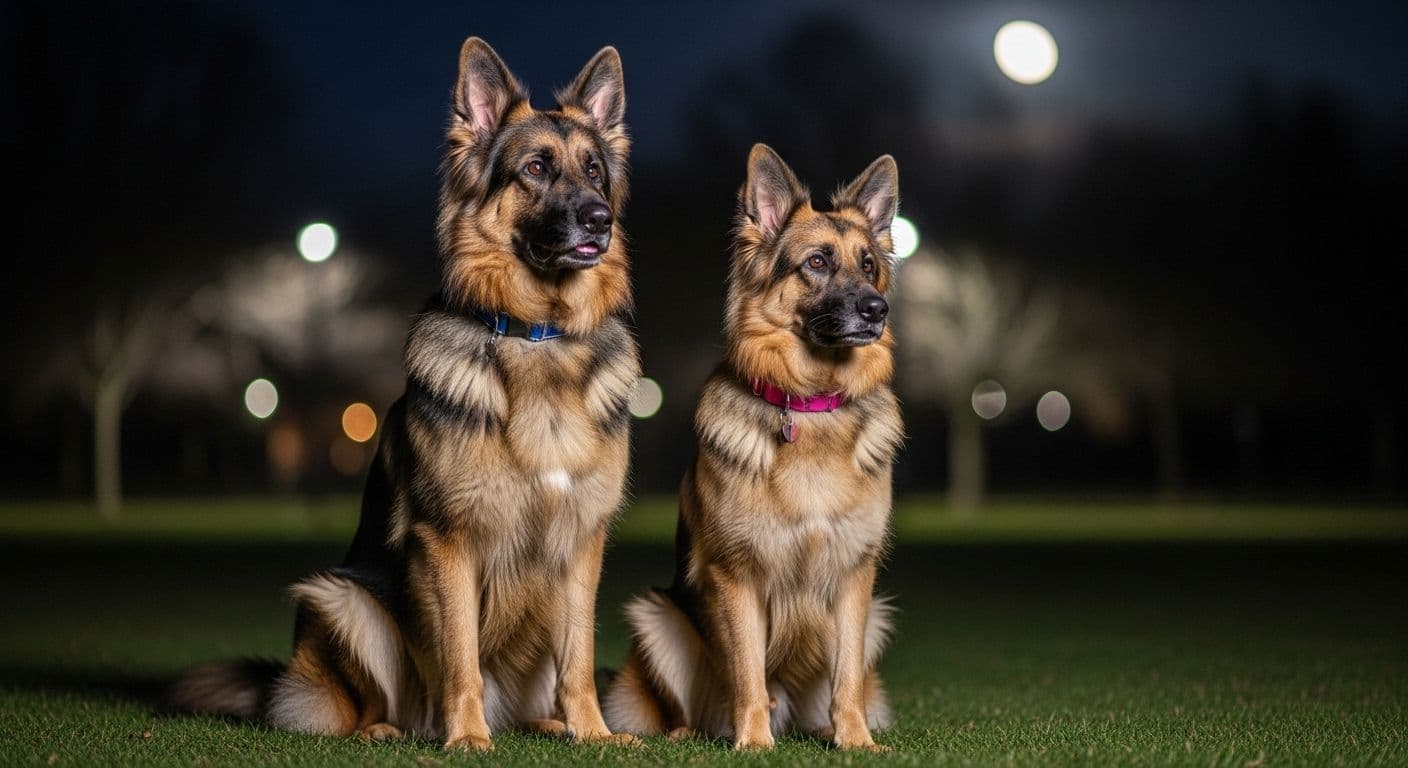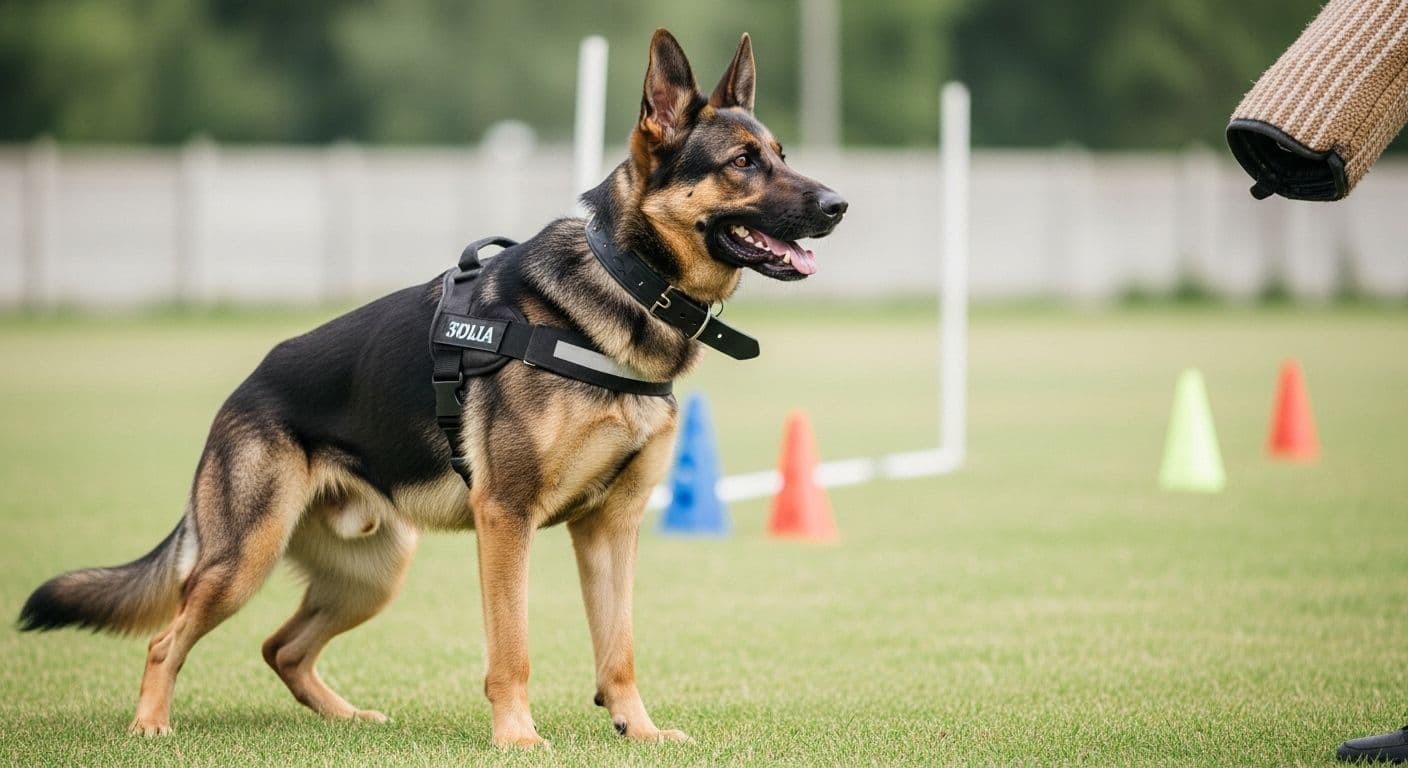Choosing a German Shepherd is a significant decision, and one of the first questions prospective owners ask is whether to get a male or a female. While both sexes share the breed's trademark intelligence, loyalty, and courage, there are distinct differences that can influence which one is the better fit for your lifestyle. This comprehensive guide explores the key distinctions in the great male vs female German Shepherd debate, covering everything from size and temperament to training and family dynamics.
It's crucial to remember that while we'll discuss general tendencies, every dog is an individual. A German Shepherd's lineage, socialization, and training will ultimately play a more significant role in shaping its personality than its sex. However, understanding these common traits can help you make a more informed choice.
Male vs Female Basics

Before diving into the details, let's start with a high-level overview of the typical differences you can expect. These generalities provide a foundation for understanding how sex can influence a German Shepherd's characteristics.
Size at a Glance
- Male German Shepherds are generally larger, standing 24-26 inches at the shoulder and weighing between 65 and 90 pounds.
- Female German Shepherds are typically smaller and lighter, measuring 22-24 inches tall and weighing 50 to 70 pounds.
Temperament at a Glance
- Males often display more assertive, dominant, and territorial behaviors. They can be more playful and goofy but may also be more easily distracted and mature mentally at a slower pace. Many males form an incredibly strong bond with a single primary handler.
- Females tend to be more nurturing, gentle, and family-oriented, often bonding with everyone in the household. They generally mature faster, have better attention spans, and are sometimes described as more attuned to their owner's emotions.
Both sexes are equally intelligent and require consistent training from a young age to become well-behaved companions. The most notable biological difference, of course, is that intact females go into heat approximately every six months, while intact males are fertile year-round.
Size and Build
One of the most apparent differences between male and female German Shepherds is their physical stature. These distinctions go beyond simple height and weight, affecting their overall presence and appearance.
Height and Weight
As established by the American Kennel Club (AKC) breed standards, males are noticeably larger than females.
- Males: 24–26 inches (61–66 cm) tall | 65–90 pounds (30–41 kg)
- Females: 22–24 inches (56–61 cm) tall | 50–70 pounds (23–32 kg)
This size difference means a male GSD can be a much more physically imposing dog, which is a key consideration for handling, living space, and even food costs.
Growth Timeline
Both sexes grow rapidly, reaching about 70% of their adult size by the six-month mark. Most German Shepherds will reach their full adult height by 12 to 18 months. However, their development doesn't stop there.
Expert Tip: After reaching their final height, German Shepherds continue to fill out, gaining muscle and maturing into their adult form. Males often take longer, continuing to develop until they are 2.5 or even 3 years old. Females typically reach their full adult physique by around age 2.
Physical Stature
Beyond the numbers, their overall build differs significantly.
Male German Shepherds are built for power. They have a broader, heavier-boned frame with a deeper chest and more substantial musculature. Their heads are typically larger and more blocky, giving them a commanding and formidable appearance.
Female German Shepherds, in contrast, tend to have a sleeker, more refined build. Their bone structure is finer, and their musculature is less bulky, contributing to a more agile and elegant look. Their heads are often narrower with more delicate facial features.
Temperament Traits

While size is easy to measure, temperament is more nuanced. The behavioral tendencies discussed here are generalities, not guarantees. A well-bred female from a working line could be more assertive than a male from a show line. Always consider the individual dog's personality.
Maturity and Energy Levels
- Maturity: Females tend to mature mentally and emotionally faster than males. This can make them more receptive to training at an earlier age. Males often have a longer "puppy" or "teenage" phase, which can come with stubborn behaviors that require extra patience and consistent leadership.
- Energy: Males are often described as having slightly higher energy levels. Their play style can be more boisterous and rough, which is important to consider in households with small children. Females typically have a calmer, more balanced energy.
Dominance and Territoriality
- Dominance: Males are more likely to exhibit dominant or assertive behaviors, especially around other male dogs. They may be more possessive of resources like food, toys, or their favorite sleeping spot. While females can also be assertive, they are generally less prone to overt dominance challenges.
- Territoriality: The instinct to guard is strong in both, but it often manifests differently. Males tend to be more territorial over property—the house, the yard, the car. This can include more frequent urine marking, especially if they are not neutered. Females are often more protective of their "pack" or family members than of physical spaces.
Affection and Bonding
Both sexes are known for their loyalty, but their styles of affection can differ.
- Males often form an exceptionally deep bond with one person, who they may see as their primary handler. While they will be friendly and protective of the entire family, their focus can be very singular.
- Females frequently bond strongly with the whole family. They are often described as more nurturing and emotionally attuned, readily offering affection to all members of their pack.
Trainability and Independence
- Males can sometimes be more challenging to train due to their independent nature and shorter attention spans. Their assertiveness requires a confident handler who can provide clear, consistent direction.
- Females are often more eager to please and have a better attention span, which can make them excel in obedience and agility training. They tend to stay closer to their handlers and are generally more responsive.
Training and Work

As one of the world's premier working breeds, German Shepherds are born to have a job. How their sex influences their trainability and suitability for certain roles is a key factor for many owners.
Trainability and Focus
While both sexes are highly intelligent, their learning styles can vary.
Females are often considered easier to train, especially for first-time GSD owners. Their quicker emotional maturity and eagerness to please mean they are often receptive to training from a very young age. Their ability to maintain focus during training sessions is a significant advantage.
Males, with their independent streak, may require a firmer and more patient handler. They can be more easily distracted by their environment, whether it's a squirrel in the yard or a potential threat down the street. Consistent, engaging training is key to keeping their attention.
Best Working Roles
Different traits make each sex naturally suited for specific types of work, though with proper training, either can excel in nearly any role.
- Protection & Law Enforcement: Males are frequently chosen for police, military, and personal protection work. Their larger size, imposing presence, and assertive nature make them natural guardians. Females are also excellent protectors, but males often have a slight edge in roles requiring sheer physical strength.
- Agility & Obedience Sports: Females often shine in activities that require speed, precision, and a high degree of focus. Their smaller, more agile build is a physical asset in agility, while their eagerness to please makes them strong competitors in obedience trials.
- Detection & Search and Rescue: Both sexes are used with great success in scent detection, tracking, and search and rescue. The best dog for the job comes down to individual drive and skill, not gender.
- Family & Therapy Roles: With their gentler and more nurturing disposition, females are often a natural fit for roles as family companions or therapy dogs. A well-trained male can also be a wonderful family dog, particularly for active, experienced owners.
Family and Home
How does a German Shepherd fit into daily family life? Here’s how the male vs female German Shepherd comparison plays out in a home environment.
Fit with Children
Both sexes can be fantastic companions for children when raised and socialized properly.
- Females are often recommended for families with small children due to their typically gentler and more patient nature.
- Males can be wonderful, playful protectors, but their larger size and boisterous energy mean that supervision is always essential to prevent accidental knock-downs during rough play.
Compatibility with Other Pets
Introducing a German Shepherd into a multi-pet household requires careful management, regardless of sex.
- Males may show more dominance-related aggression toward other male dogs. Early and thorough socialization is critical.
- Females are often more adaptable with other pets, though some may be unwelcoming to new animals that challenge their position in the family hierarchy.
- General Rule: An opposite-sex pairing (one male, one female) often leads to the most harmonious relationship in a multi-dog home.
Space and Daily Care Needs
German Shepherds are active, intelligent dogs that require significant commitment.
- Exercise: Both sexes need at least 1.5 to 2 hours of vigorous exercise and mental stimulation daily. A bored GSD is often a destructive GSD. This is non-negotiable, whether you live in an apartment or a large house.
- Grooming: Their thick double coat sheds constantly and "blows" (sheds profusely) twice a year. Regular brushing is required for both males and females to manage shedding and prevent mats.
- Health: The breed is prone to certain health issues like hip and elbow dysplasia. Unspayed females are at risk for pyometra (a uterine infection), while unneutered males can have their own reproductive health issues.
Which to Choose
So, after weighing all the factors, should you get a male or a female? The final decision depends on your experience, lifestyle, and goals.
Male vs Female German Shepherd - Which One Should You Get?
When to Choose a Male German Shepherd
A male might be the right choice if:
- You want a more physically imposing dog for protection or as a visual deterrent.
- You are an experienced, confident handler who can provide firm and consistent leadership.
- You have an active lifestyle and can provide the strenuous exercise and mental stimulation a high-energy male requires.
- You appreciate a more goofy, playful, and independent personality.
When to Choose a Female German Shepherd
A female might be a better fit if:
- You are a first-time German Shepherd owner or prefer a slightly easier-to-manage dog.
- You have a family with small children and value a gentler, more nurturing temperament.
- You are interested in dog sports like agility, where her focus and nimbleness would be an asset.
- You prefer a companion that bonds closely with the entire family.
The Impact of Spaying and Neutering
Your decision to spay or neuter your dog will significantly impact its behavior.
Neutering a male can reduce or eliminate testosterone-driven behaviors like territorial marking, roaming, and aggression toward other males. It will not, however, change his core personality.
Spaying a female eliminates her heat cycles, the risk of pyometra, and the unwanted attention of male dogs.
Important Health Note: There is growing evidence that spaying or neutering large-breed dogs like German Shepherds too early can increase the risk of joint disorders. It is essential to discuss the appropriate timing for this procedure with your veterinarian and a reputable breeder.
In the end, the choice between a male vs female German Shepherd is personal. While there are clear trends in size and temperament, the most important factors are the quality of the breeder, the individual puppy's personality, and the commitment you make to training and socialization. Talk to reputable breeders, meet both male and female adult GSDs, and choose the dog that best connects with you and your family.



